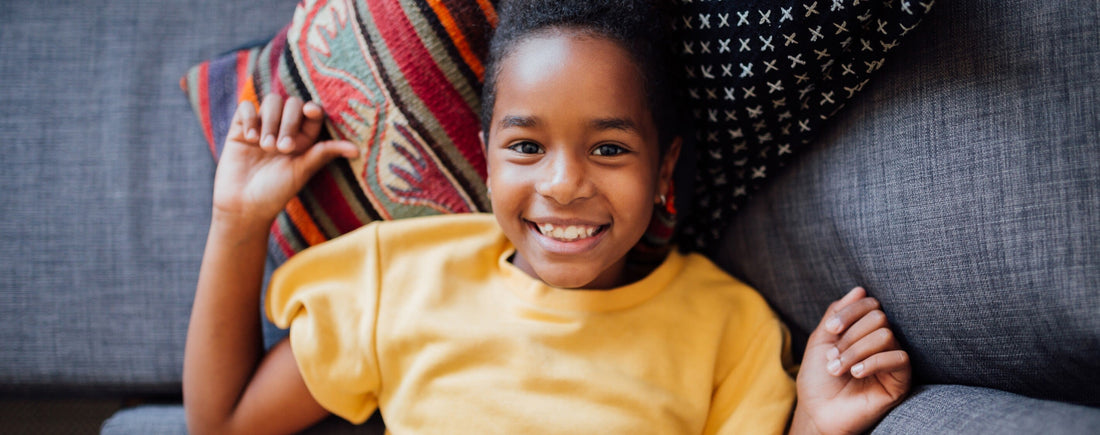As a parent, you want your children to be successful. But have you ever considered your personal definition of success? Although society typically correlates success with financial wealth, academic prowess, or fame, your values might conjure up a different definition. How can you raise children who are successful because they lead a mindful, community-minded, fulfilling, and compassionate life?
Parenting with this in mind is not easy; living in overdrive is the American way. Americans over-schedule, under-sleep, and push themselves to exhaustion. As a parent, it’s your responsibility to break this cycle for your children. To help you mold mindful and compassionate children, try out these four simple and fun exercises.
S: Stop. Ask your children to drop whatever they are doing.
T: Take three deep breaths. Instruct your children to take a few deep, belly-filling breaths with long inhales and exhales.
O: Observe. Invite your children to tune into their physical sensations, surroundings, and emotions. They can notice what they see, hear, feel, and taste. They can label their emotions (without judging them). Ask them to identify their thoughts.
P: Proceed. They can carry on with more awareness.
As a craft project, ask your children to help you create a few S.T.O.P. signs to place around the house. Family members can agree to S.T.O.P. when they run across the sign. Every week or so, move the signs to keep family members on their toes.
See if you can pretend to be a frog sitting very, very still on a lily pad. While you sit on that lily pad, Mr. Frog, you breathe. If you move too much, your lily pad will tip over, and you’ll wind up in the water. So, you just sit still as your green frog tummy goes in and out. Although you can leap high into to the sky, you can also sit still like a statue, like you are now. Because you’re a frog, you just watch what’s happening all around you and within you, and you don’t jump into action right away. You simply sit still and breathe on that lily pad, storing up your energy. Notice how your tummy in and out, Mr. Frog. In and out.
One tool to help your kids remember to be compassionate every day is the COMPASSION IT wristband; it’s a simple tool that encourages your children to seek out ways to offer compassion. The wristband is a different color on each side, so you can use one side to remind yourself to give compassion, and flip to the other side when you’ve succeeded.
Do you wonder how much easier life would have been if you had learned mindfulness skills at an early age? The torment of middle school, the agony of junior high, and the storms that accompany life might have been easier to whether by being more mindful of emotional responses. You have the opportunity to help prevent your children from getting carried away by the pain that accompanies life. By teaching mindfulness and compassion, you can set them up for success.
*Editor’s Note: The information in this article is intended for your educational use only and is not a substitute for professional medical advice, diagnosis, or treatment. Always seek the advice of your physician or other qualified health providers with any questions you may have regarding a medical condition and before undertaking any diet, supplement, fitness, or other health programs.
Find balance anywhere, anytime with the new Chopra App. Download it now for hundreds of personalized guided meditations at your fingertips.
Parenting with this in mind is not easy; living in overdrive is the American way. Americans over-schedule, under-sleep, and push themselves to exhaustion. As a parent, it’s your responsibility to break this cycle for your children. To help you mold mindful and compassionate children, try out these four simple and fun exercises.
1. S.T.O.P.
Use the popular mindfulness acronym S.T.O.P. to introduce mindfulness in your household.S: Stop. Ask your children to drop whatever they are doing.
T: Take three deep breaths. Instruct your children to take a few deep, belly-filling breaths with long inhales and exhales.
O: Observe. Invite your children to tune into their physical sensations, surroundings, and emotions. They can notice what they see, hear, feel, and taste. They can label their emotions (without judging them). Ask them to identify their thoughts.
P: Proceed. They can carry on with more awareness.
As a craft project, ask your children to help you create a few S.T.O.P. signs to place around the house. Family members can agree to S.T.O.P. when they run across the sign. Every week or so, move the signs to keep family members on their toes.
2. Sit Like a Frog
Mindfulness instructor Eline Snel offers several exercises for teaching meditation and mindfulness to children. One of the exercises is inviting a child to be like a frog. This exercise is adapted from Sitting Still Like a Frog:See if you can pretend to be a frog sitting very, very still on a lily pad. While you sit on that lily pad, Mr. Frog, you breathe. If you move too much, your lily pad will tip over, and you’ll wind up in the water. So, you just sit still as your green frog tummy goes in and out. Although you can leap high into to the sky, you can also sit still like a statue, like you are now. Because you’re a frog, you just watch what’s happening all around you and within you, and you don’t jump into action right away. You simply sit still and breathe on that lily pad, storing up your energy. Notice how your tummy in and out, Mr. Frog. In and out.
3. Do the “Stuffy Belly” Loving-Kindness Exercise
Bookend each day with a loving-kindness practice. It teaches your children to consider the well-being of everyone on the planet, including themselves.- As your children lie in bed, encourage them to pick out a favorite plush toy to place on their tummies. Ask them to watch the toy move up and down as they breathe. (This settles the mind.)
- After a few moments, ask them to say to their toy, “May you be happy, [insert toy’s name].”
- Instruct them to pretend there is a mirror in front of them, and invite them to say “May you be happy, [insert child’s name].”
- Now ask them to think of a friend and say, “May you be happy, [insert friend’s name].”
- Next, send positive thoughts to family members, neighbors, and others in your community.
- Expand that circle to include others in your country, everyone on the planet, and, finally, all beings. You can use phrases like, “May you live with joy,” “May you be content,” or “May you be peaceful.”
4. Use Compassion and Kindness Reminders
Make compassion a part of your family’s everyday life by using reminders to make kindness habitual. You can speak with your children about compassion and explain that everyone could use help in some way. When you take action and help a person, you are being compassionateOne tool to help your kids remember to be compassionate every day is the COMPASSION IT wristband; it’s a simple tool that encourages your children to seek out ways to offer compassion. The wristband is a different color on each side, so you can use one side to remind yourself to give compassion, and flip to the other side when you’ve succeeded.
Do you wonder how much easier life would have been if you had learned mindfulness skills at an early age? The torment of middle school, the agony of junior high, and the storms that accompany life might have been easier to whether by being more mindful of emotional responses. You have the opportunity to help prevent your children from getting carried away by the pain that accompanies life. By teaching mindfulness and compassion, you can set them up for success.
*Editor’s Note: The information in this article is intended for your educational use only and is not a substitute for professional medical advice, diagnosis, or treatment. Always seek the advice of your physician or other qualified health providers with any questions you may have regarding a medical condition and before undertaking any diet, supplement, fitness, or other health programs.
Find balance anywhere, anytime with the new Chopra App. Download it now for hundreds of personalized guided meditations at your fingertips.






















